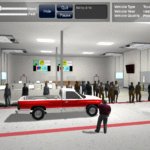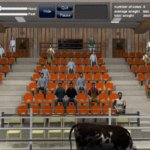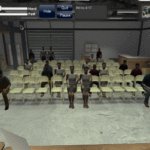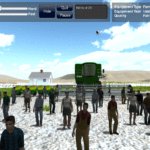I sold my first lot at live auction exactly 10 years ago next month. I never went to auction school. A decade ago, I was in college in Manhattan, Kan., and driving the 200 miles back and forth from Sharon, Kan., at least once a month. I had recently started working for an auction company and had decided that I wanted to be a bid caller, so I spent mile after mile practicing my chant. Fence posts and telephone poles are too regular, so I took my bids from yellow signs on the highway.
I got pretty good. I had a fairly quick chant, with several variations of filler words and could do fairly good impressions of my bid calling colleagues. My favorable assessment of my own abilities was quickly reset, however, after an auction one night when my coworkers threw me up on the stand and I actually got to practice selling to real people.
People don’t bid like signs bid. Signs are predictable; arbitrarily resetting the bidding increments is unrealistic. To a new bid caller, taking bids from people is very unpredictable – perhaps chaotic or even frightening – compared to practicing alone. Until now, it’s been nearly impossible to simulate an in-person bidding environment that could be used to practice bid calling in private.
Enter: Virtual Auction
 Virtual Auction is bid calling practice software that is the first and only in-person auction simulation system I’ve ever seen. I caught up with Virtual Auction’s creator David Whitaker at the Missouri Professional Auctioneers Association convention and got a first-hand look.
Virtual Auction is bid calling practice software that is the first and only in-person auction simulation system I’ve ever seen. I caught up with Virtual Auction’s creator David Whitaker at the Missouri Professional Auctioneers Association convention and got a first-hand look.
With better 3D graphics than some video games, Virtual Auctions allows the user to control the graphics quality, screen resolution, bidding environment, size of crowd, bid speed, difficulty of bid signals and number of bidders.
Virtual Auction simulates five types of bidding environments.
- Automobiles
- Benefits
- Livestock
- Estate
- Farm
The crowd behaves according to the settings, bidding in unpredictable intervals until the auctioneer says sold and clicks the sold button. The view then zooms to the last bidder who shows a bid card. Each environment features a tutorial. The software even includes appropriate background sounds for each environment as well as audible ringmen “yeps” which, thankfully, can optionally be muted. Each environment has subtle differences in aspects like view angle, crowd positioning and crowd attire. For example, the crowd in the benefit auction environment are all dressed in black and the livestock crowd will request to cut the bidding increments.
In addition to the auction simulations, Virtual Auction includes a battery of number drills that many bid callers will remember from auction school, though the ability to control increment and speed by software makes the drills much more useful. “I want to help students continue doing what they learned in Paul Behr’s class at auction school…a study guide to use at home,” said Whitaker. He says, “I don’t want to teach you how to auction, I want to let you practice.”
I asked David why he created Virtual Auction.
I wanted to create a practice platform to help auctioneers, both old and new, improve their bid calling. I’m trying to make connections with auction schools to raise awareness among new auctioneers and hopefully work with the National Auctioneers Association to get the word out to established auctioneers.
He says the response has been overwhelmingly positive. “The auction schools I’ve contacted so far tell me it fills a very important need within the industry.”
What’s been the biggest challenge so far? In addition to learning the ropes to becoming a vendor and getting the word out, Whitaker says the release itself has been an ordeal. “Finding the developer has been hard. Taking an idea and turning it into software isn’t easy. It took six months to find a developer who could understand the concept as well as handle the animation and build it for a reasonable cost.”
He already has some good ideas for version two. “I’m thinking about voice recognition and competition mode for the next version, perhaps even turning it into a playable game.”
Virtual Auction sells for $149.99. That seems like an easy sell for any professional bid caller who wants to improve or change his or her chant. However, it seems like an invaluable must-buy for any rookie auctioneer or recent auction school graduate.
Virtual Auction works with any Mac or PC with a DVD drive. Learn more and see demonstration videos at virtualauctioneering.com.




